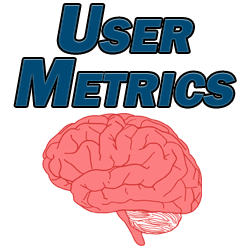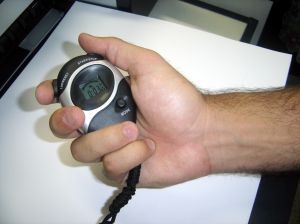User metrics refer to how people interact with your site. Google is in the middle of a transition in terms of how they rank a web page. This transition is moving away from purely focusing on links and is moving more toward focusing on the user experience and is looking to the user to do Google’s job for them.
User Metrics
Two major points of this refer to social proof/influence and user metrics. Social proof refers to how people interact with your site on social networks, give you social proof, and generally share your content. Check out my tips on social media optimization techniques to consider for more information on that.
As I just mentioned, user metrics relates to how people interact with your website and this helps Google decide how much quality your site provides or doesn’t provide to its visitors. Google can track how people interact with your site by looking at their own SERPs as well as through Google Analytics installed on your site, the Google toolbar, or through their own web browser Google Chrome. All of this combined helps to give Google a pretty decent reading on your website’s user metrics.
Google’s bottom line is to provide the best search results to its users, so let’s take a look at 6 user metrics which it considers when ranking a site to gauge its quality and how you can improve your user metrics.
Traffic – This one’s self explanatory. Your traffic level relates to your site as a whole. The more traffic your site gets, the better it must be to warrant a higher level of traffic and the better each of your pages will perform; it’s as simple as that. Consider my big list of traffic sources for more information on how to boost your traffic levels.
Click Through Rate in SERPs – Google knows that the closer your site is to ranking at number 1, the more click throughs you’ll receive. However, if your site is at say position 1 and you’re getting beat in click throughs by a page at position 3 or 4, one which is less visible and generally less trusted (most people trust the top spot in the search engine more than subsequent spots/pages), then that says to Google that your page isn’t delivering a solution to that user’s search query in title and description alone and can drop you lower to give someone else a chance at that spot.
Check out my 6 tips on how to write a great headline, to help to get your page to stand out more in the SERPs and write an informative meta description, pointing out what you’ll cover in the post or give a teaser of the best bit.
Besides just your page’s title and description, one more thing you can do to differentiate your page from other sites in the SERPs is to include your Google Plus profile picture next to your site. I’ve put together a complete “how to” on how to do this so think about doing that as it really gives a lot more credibility to your post when someone has a face to match to it, plus most webmasters still aren’t doing this outside of the marketing niche so it will especially separate your page from the rest.
Bounce Rate – SEO and bounce rate are related. Bounce rate refers to the percentage of your visitors who come to your site or a particular page on your site and then leave without visiting another page. They may even click the back button in their browser right away if they don’t immediately see what they were looking for and Google makes note of this.
You want to lower your bounce rate as low as possible and a great way to do this is to make sure you first offer the content they’re looking for when they first click through, then include links in your article body to other related posts on your site to encourage them to click through to.
Time on Site – This obviously refers to how long someone spends on your site in total. The longer the better, so like I just mentioned make sure you have lots of links on every page to encourage people to visit multiple pages and see as much of your content as possible. This is why thin sites of only a handful of pages are generally not going to rank as well as rich and full content sites.
Pages Viewed – The number of pages which someone views also relates to your bounce rate and time spent on site, but it’s another metric all to itself. Again, stock every page with helpful links to encourage people to visit multiple pages. Also make sure your site is easy to navigate, isn’t confusing or convoluted, and has a clean and helpful menu system which will in turn help with your number of pages viewed.
Repeat Visits – Generally when someone comes to your site their browser will make a note or store a cookie saying that they’ve been to your site. Most people don’t delete or clear their cookies on a regular basis, so if and when they come back to your site, this is another metric which can be tracked and which looks very good.
You obviously want new visitors but repeat visitors are just as important if not more so because they are more loyal readers/visitors/customers and Google likes your site to have repeat visitors as this is another mark of a quality site and content.
Note that most of these metrics can be accessed via your Google Analytics account so that you yourself can learn how well or poorly your site is performing in each of these categories so that you can make it a point to improve your content and site using the tips I covered in each metric.
